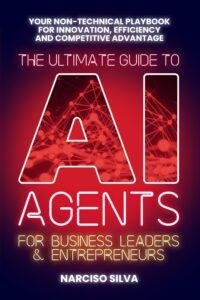Click here to buy secure, speedy, and reliable Web hosting, Cloud hosting, Agency hosting, VPS hosting, Website builder, Business email, Reach email marketing at 20% discount from our Gold Partner Hostinger You can also read 12 Top Reasons to Choose Hostinger’s Best Web Hosting
OpenAI Nvidia chips dependency has put immense pressure on the company’s ability to scale its AI services as demand for compute power soars. As organizations race to deploy advanced AI models, supply chain bottlenecks and escalating GPU costs can stall progress. Many AI teams feel stuck—juggling long waitlists for GPU access, skyrocketing cloud bills, and looming project delays. The frustration peaks when deadlines loom and compute credits run dry. Enter a game‑changing move that could break this deadlock: leveraging Google’s AI chips to reduce dependency on a single hardware vendor.
A practical, step-by-step guide for Mastering ChatGPT Deep Research Mode for faster, richer AI-assisted research—no coding required.
Embracing Google Cloud TPUs for Diversification
OpenAI has traditionally relied on Nvidia GPUs for both training and inference of large language models like ChatGPT. Now, in its first major use of non‑Nvidia silicon, OpenAI is renting Google’s Tensor Processing Units (TPUs) via Google Cloud to support inference workloads. By doing so, OpenAI can:
Mitigate supply chain risks by adding a second major hardware vendor
Lower inference costs, as TPUs often offer better price‑performance for specific AI workloads
Scale capacity quickly, tapping into Google Cloud’s global data centers
Why TPUs? Google’s TPUs are custom‑built for AI matrix computations, providing high throughput for large‑scale model execution. Though OpenAI isn’t yet using Google’s most advanced TPU v5p chips, even earlier TPU generations can handle millions of tokens per second—making them ideal for serving ChatGPT at scale.

Implications for OpenAI and AI Ecosystem
Broader Infrastructure Flexibility
Diversity in hardware empowers OpenAI to negotiate better pricing and service terms. Currently, Nvidia commands significant pricing power; adding Google chips introduces competition. This shift may prompt other AI vendors—anthropic, Meta, Microsoft—to similarly explore multi‑vendor strategies.
Cost Optimization
Inference constitutes the bulk of operational expenses for widely deployed AI services. Early modeling suggests TPUs could reduce inference costs by up to 15–20%, depending on workload characteristics. Over hundreds of millions of monthly API calls, those savings scale rapidly, freeing budget for research or customer‑facing features.
Competitive Dynamics
Google’s decision to open TPU access to rivals—OpenAI, Anthropic, startups—signals a more collaborative tone in the AI infrastructure race. For Google, capturing share of the AI compute market bolsters its cloud revenue and showcases TPU maturity. For OpenAI, this pragmatism helps maintain service reliability even amid surging demand.
A practical, step-by-step guide for Mastering ChatGPT Deep Research Mode for faster, richer AI-assisted research—no coding required.
Custom AI Chips: The Next Frontier
While adding TPUs eases short‑term constraints, OpenAI is simultaneously racing to design its own in‑house AI silicon. The company aims to finalize its first custom chip design by end of 2025, sending it to TSMC for fabrication. These chips will:
Optimize training pipelines, potentially surpassing GPU/TPU performance on select models
Provide full hardware control, reducing vendor lock‑in and strategic dependency
Enhance energy efficiency, yielding cost and sustainability gains
Complement vendor‑sourced chips, creating a blended fleet for maximum flexibility
This dual‑track approach—renting Google TPUs now, building custom chips later—positions OpenAI to scale without interruption and command greater negotiating leverage.
DeepSeek-R1 is a powerful AI tool designed for data analysis, predictions, and automation. Now, with its availability in GitHub Models, you can seamlessly integrate it into your workflows. This is especially exciting for developers who already use GitHub for version control and collaboration.
Whether you’re a total beginner or already know some AI basics but haven’t explored AI agents deeply, this book will guide you. Discover how AI agents can boost your daily operations, sharpen your leadership, and transform your entire business. In this book, you’ll discover a straightforward path to adopting AI agents for leaders—empowering you to streamline workflows, boost customer satisfaction, and reclaim precious time.
You will learn how to:
- Pick the right AI for business tools – such as AI assistants, chatbots, or LLM-based solutions to meet your specific goals, as you build a foundation understanding of machine learning.
- Map out a custom roadmap for deploying AI agents, from small pilot programs to larger-scale integrations, without massive disruptions or technical headaches.
- Leverage Agentic AI by mastering best practices in data handling, ethical considerations, and automated workflows.
You’ll also find:
- Real-world case studies showcasing how entrepreneurs and business leaders successfully integrated artificial intelligence to streamline daily tasks.
- Step-by-step frameworks that align AI assistants, chatbots, and LLMs with your company culture and leadership style, ensuring smooth adoption.
- Easy methods for measuring ROI, helping you confidently expand your machine learning initiatives and prove the value of your investment.
- Long-term, actionable strategies to keep both beginners and experienced leaders agile in an ever-evolving AI landscape, so you can continue to grow and stay ahead of new opportunities and challenges.
Key Takeaways of Reducing OpenAI Nvidia Chips Dependency
Diversification is critical: Relying on one vendor exposes AI services to supply risks and pricing pressure.
TPUs cut costs: Early adoption of Google’s TPUs for inference can lower operational bills by up to 20%.
Market collaboration: Google’s opening of TPU rentals to competitors marks a pragmatic shift in AI infrastructure.
Custom silicon ahead: OpenAI’s in‑house chip designs could redefine AI training and inference efficiency by 2026.
Competitive leverage: Multi‑vendor hardware strategy strengthens OpenAI’s bargaining power with Nvidia and cloud partners.
Writing SEO-friendly content can feel tricky. That’s where AI tools like ChatGPT step in to help. With the right prompts, you can create content that’s optimized for search engines while being useful for readers.
FAQs
What are TPUs and how do they differ from GPUs?
Answer: Tensor Processing Units (TPUs) are custom ASICs designed by Google specifically for matrix‑heavy AI workloads. Unlike general‑purpose GPUs, TPUs streamline tensor operations for deep learning, often providing higher throughput at lower cost per operation.
Will OpenAI stop using Nvidia GPUs altogether?
Answer: No. Nvidia GPUs remain essential for training large models and certain inference tasks. The TPU integration adds flexibility, not a wholesale replacement.
When will OpenAI’s custom AI chips be available?
Answer: OpenAI aims to finalize its first chip design by late 2025, with mass production targeted for 2026, subject to TSMC fabrication timelines.
How does this affect AI developers?
Answer: Diversified compute options may translate to more competitive pricing and broader regional availability, improving service reliability for developers using OpenAI APIs.
ChatGPT can reference all your previous conversations to offer a more personalized and streamlined experience. Whether you’re using it to brainstorm ideas, draft emails, or simply chat about your day, this update is set to revolutionize how we interact with AI.
We currently live in a world where businesses are paying hundreds of dollars to people for writing engaging articles and blogs, and thousands of dollars per month for social media marketing and SEO. Now using ChatGPT, anyone including you can do this really well – even if you have no experience in this! Most businesses are not aware of or are not using this right now – which is where you can come in and undercut existing providers while doing almost zero work – and this book will show you how to step-by-step – with instructions you can copy and paste. This market may become saturated a year from now – but this is the right time to start!
This rollout arrives amidst rising competition in the AI development tools sector. Reports indicate that OpenAI is nearing completion of a $3 billion acquisition of Windsurf, a well-known AI coding platform. Simultaneously, Google has expanded its Gemini chatbot with GitHub integration, highlighting the increasing demand for AI solutions tailored for developers.
Conclusion
OpenAI Nvidia chips dependency has long been a bottleneck. By strategically integrating Google Cloud TPUs today and advancing custom chip development for tomorrow, OpenAI is forging a resilient, cost‑effective computing infrastructure. Ready to stay ahead in the AI race? Explore more insights on AI hardware strategies in our AI Hardware Trends series and subscribe to our newsletter for breaking updates.
Now loading...








